Abstract
The Okefenokee Swamp exhibited levels of microbial biomass and aerobic glucose uptake comparable to those of other organically rich, detritus-based aquatic ecosystems. In contrast to other peat-accumulating systems, this acidic (pH 3.7), low-nutrient environment does not show diminished water column or surface sediment microbial biomass or heterotrophic activity. The total particular ATP varied between 0.03 and 6.6 μg liter−1 (mean, 1.6 μg liter−1) in water and between 1 and 28 μg g (dry weight)−1 (mean, 10.0 μg g [dry weight]−1 in sediments. The turnover times for dissolved d-glucose were 1.26 to 701.25 h (mean, 110.25 h) in aerobic waters and 2.4 to 72 min (mean, 10.2 min) in aerobic surface sediments. Water column bacterial secondary production, measured as the incorporation of [3H]thymidine into cold-trichloroacetic acid-insoluble material, ranged from 0.06 to 1.67 nmol liter−1 day−1 (mean, 0.45 nmol liter−1 day−1). The kinetics of d-glucose uptake by water column microflora are multiphasic and suggest the presence of a diverse microbial population capable of using labile substrates at nanomolar concentrations and at substantial rates. The presence of a large and active aerobic microbial community in the Okefenokee Swamp is indicative of an important role for microbes in swamp geochemistry and strongly suggests the existence of a detritus-based food web.
Full text
PDF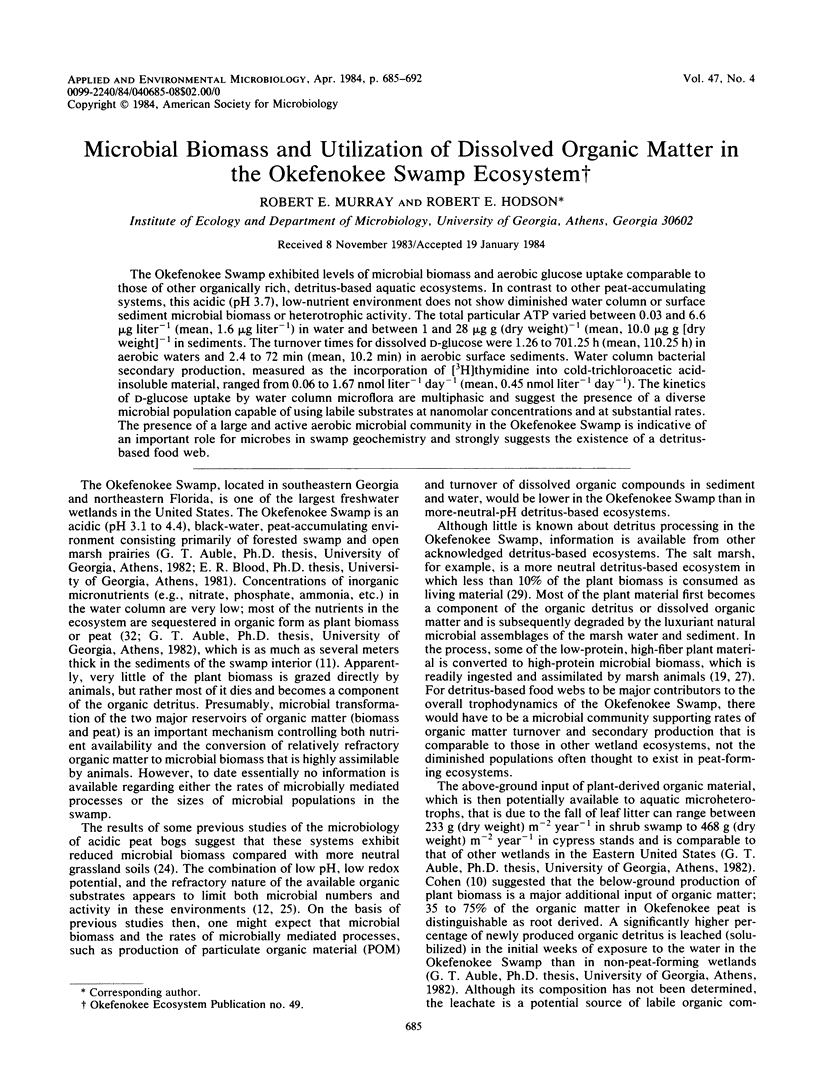
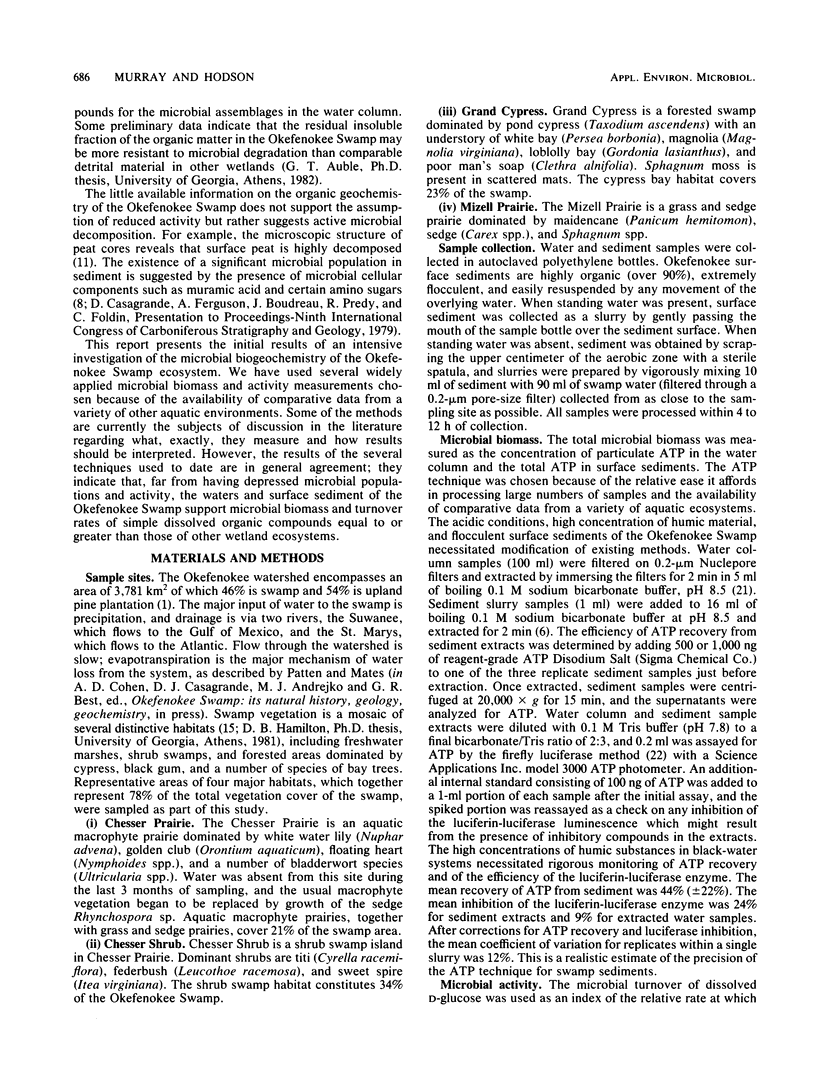
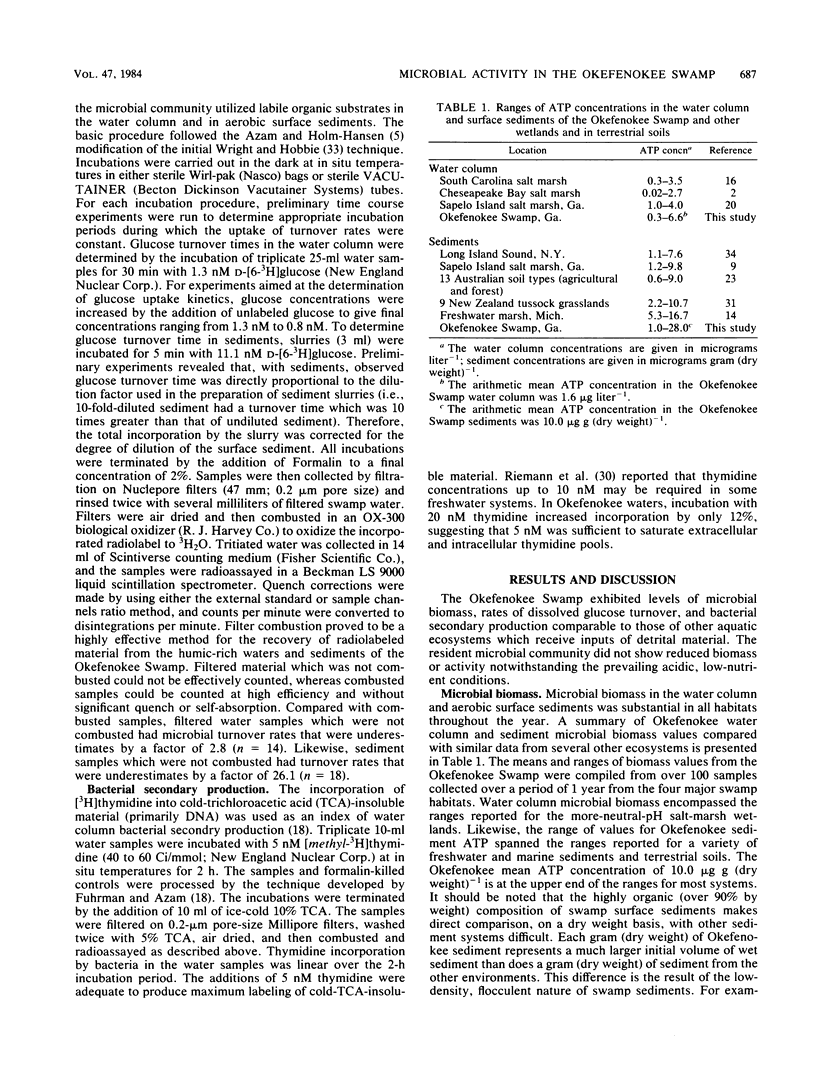
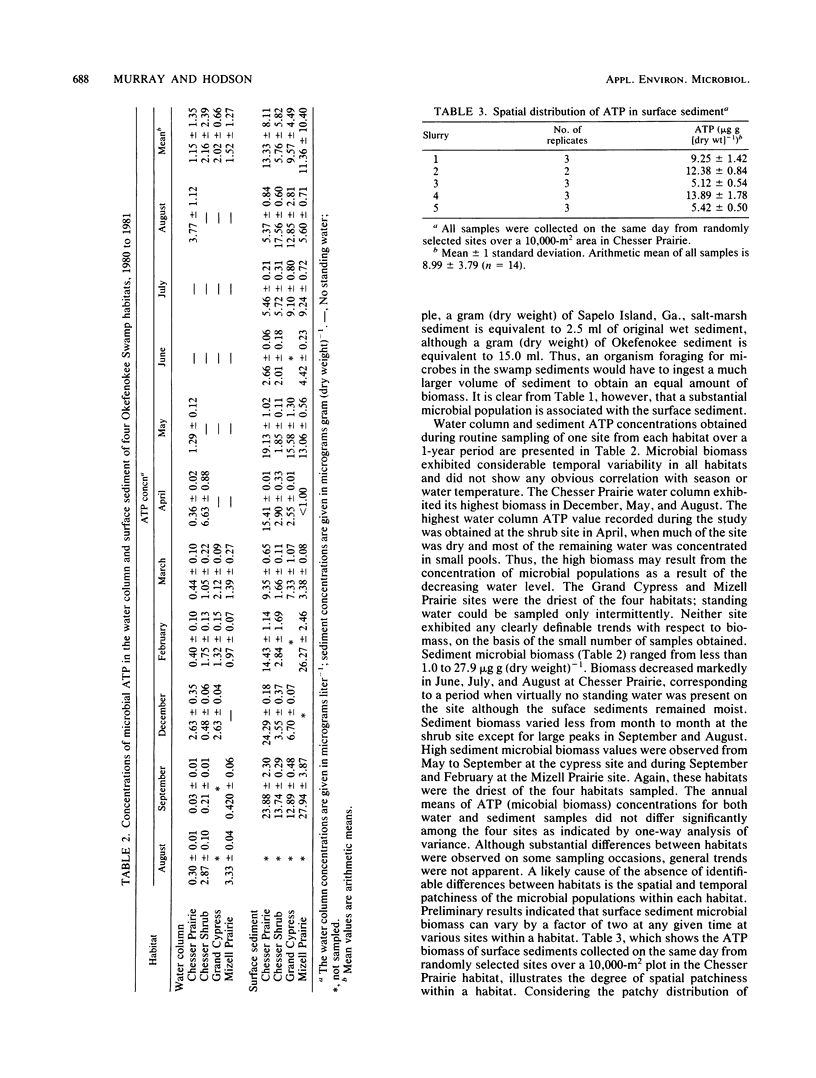
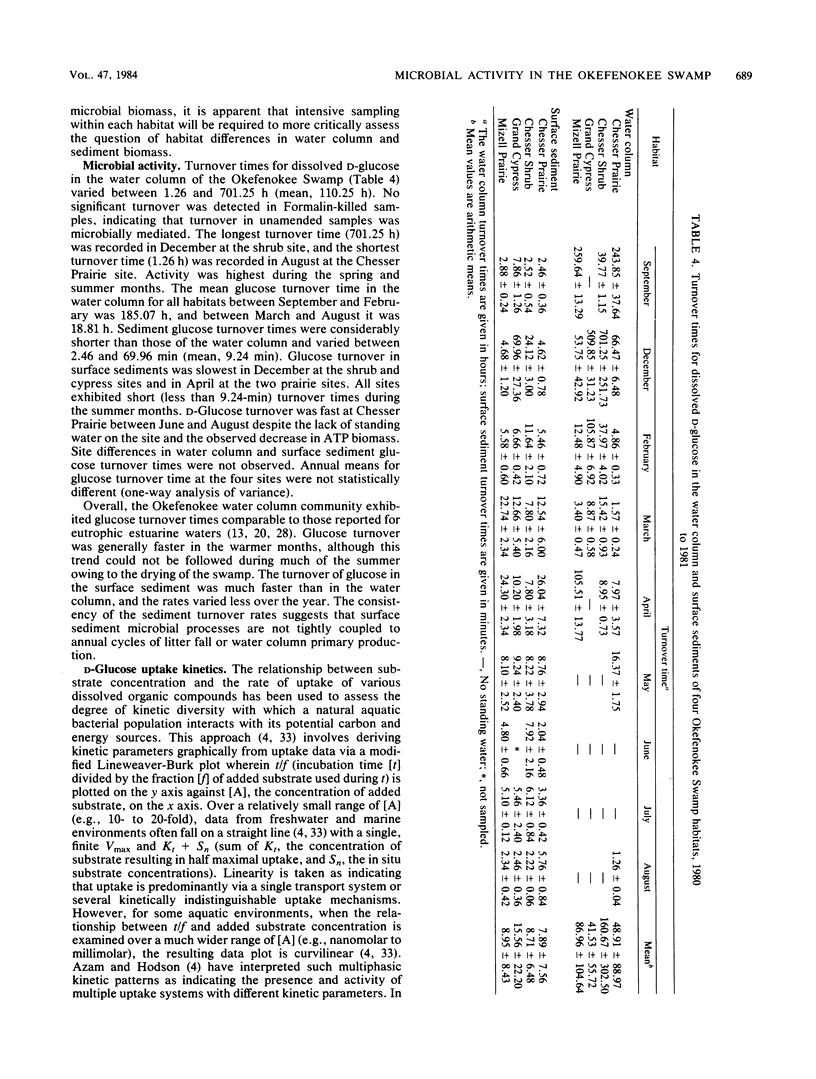

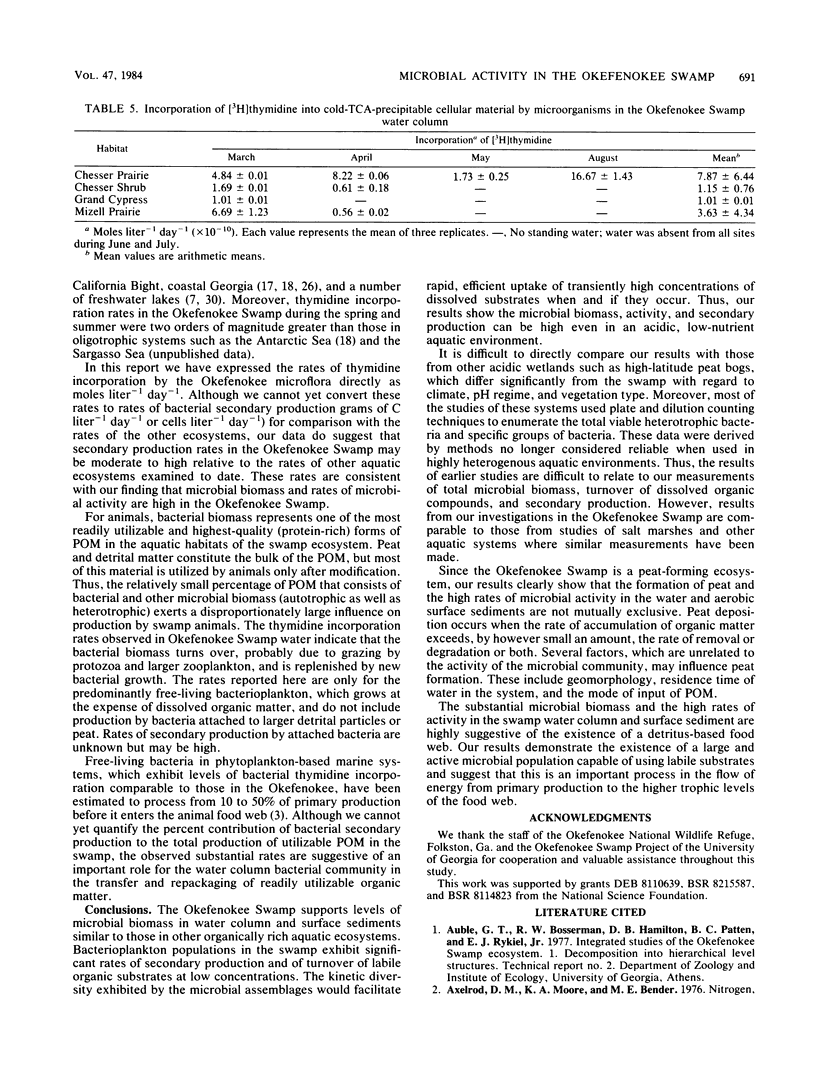

Selected References
These references are in PubMed. This may not be the complete list of references from this article.
- Bell R. T., Ahlgren G. M., Ahlgren I. Estimating Bacterioplankton Production by Measuring [H]thymidine Incorporation in a Eutrophic Swedish Lake. Appl Environ Microbiol. 1983 Jun;45(6):1709–1721. doi: 10.1128/aem.45.6.1709-1721.1983. [DOI] [PMC free article] [PubMed] [Google Scholar]
- Fuhrman J. A., Azam F. Bacterioplankton secondary production estimates for coastal waters of british columbia, antarctica, and california. Appl Environ Microbiol. 1980 Jun;39(6):1085–1095. doi: 10.1128/aem.39.6.1085-1095.1980. [DOI] [PMC free article] [PubMed] [Google Scholar]


